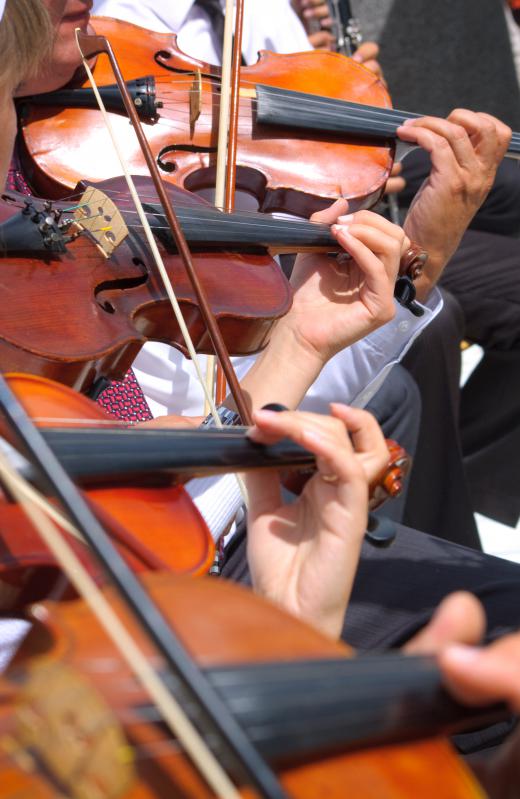The types of orchestra layouts depend on the size of the orchestra, the room or hall the ensemble is playing in, and the dynamics of the instruments used. Seating arrangements usually keep classes of instruments together. In most orchestra layouts, the softer sounding instruments sit closest to the audience as they are more difficult to hear. Louder instruments, such as horns or percussion, are farther from the audience because they are easier to hear. Regardless of orchestra size, the conductor arranges the instruments to give the listener the optimum effect of the musical work.
Symphony orchestras play in grand theaters or music halls and usually have many members. In a symphony orchestra layout, the musicians are seated in a semi-circle with the conductor placed in center front. As viewed from the audiences’ perspective, the string instruments sit nearest to the conductor in the center of the circle with the woodwinds seated directly behind. The brass sections sit behind the strings, slightly off center, and to the left of the conductor while percussion is placed to the far left in the back. The harp section sits on the far left of the conductor nearest to the string instruments, and the bases are directly opposite on the right side.

A chamber orchestra is a smaller version of the symphony orchestra with about 25 musicians and has many, diverse orchestra layouts that depend upon the instruments used for the piece. These smaller orchestras may perform with or without a conductor. The general idea is to present the instruments in such a way that it reduces noise and blends the sound of the instruments together. As a result, the instruments in chamber orchestra layouts are arranged in a similar fashion as those of symphony orchestras. The louder instruments are in the back while the softer instruments are in the front.

As with chamber orchestras, a string orchestra is a smaller portion of a symphony orchestra and the seating arrangement is similar. The strings can be arranged in full circle with the first violins and the violas in the front, and the second strings seated behind the first. In the next row, the bases and the cellos sit on either side and directly opposite one another. Another popular string orchestra layout is the semi circle used in symphony orchestras. In these orchestra layouts, the chairs are more angled to face other string players rather than a conductor.
